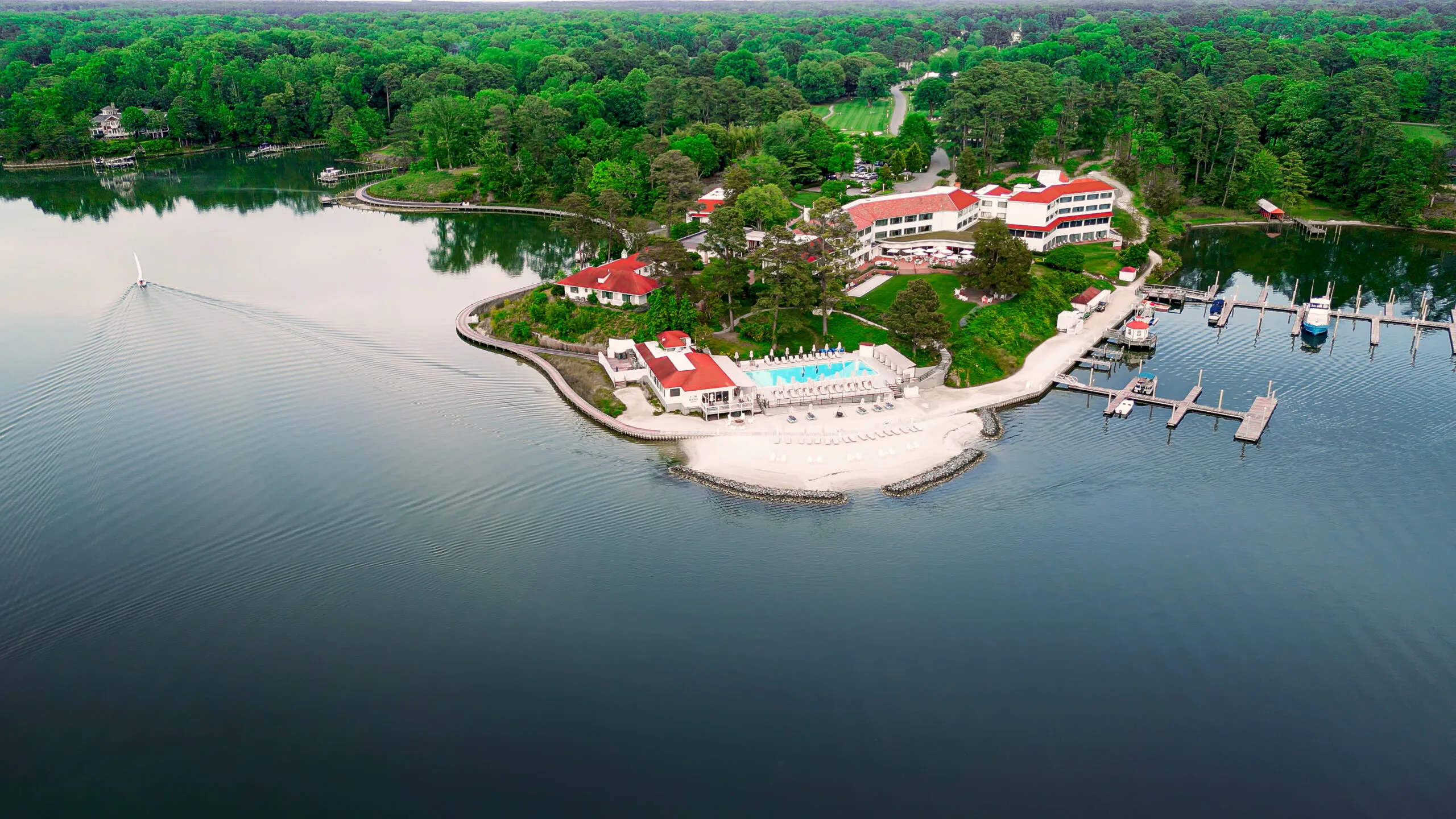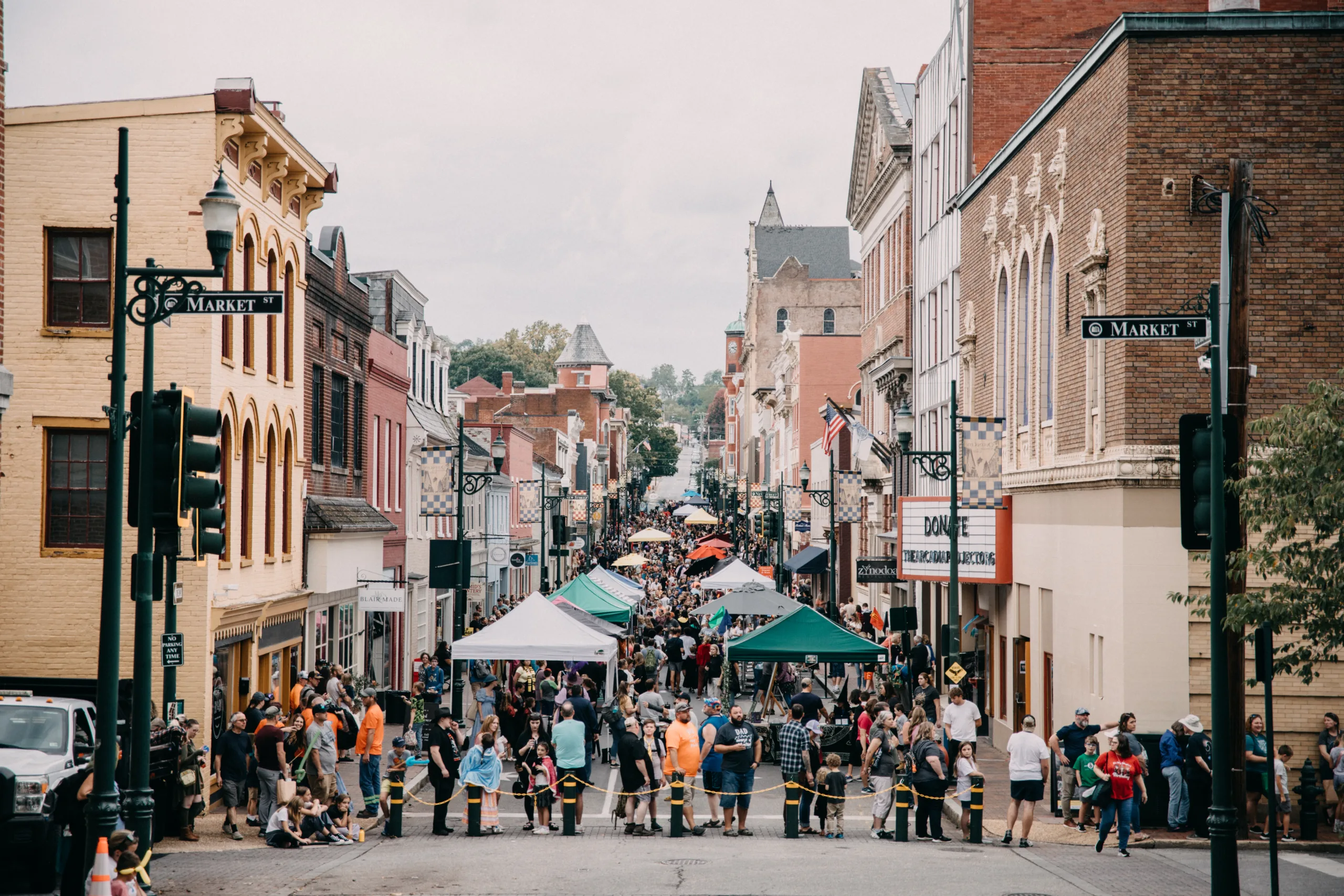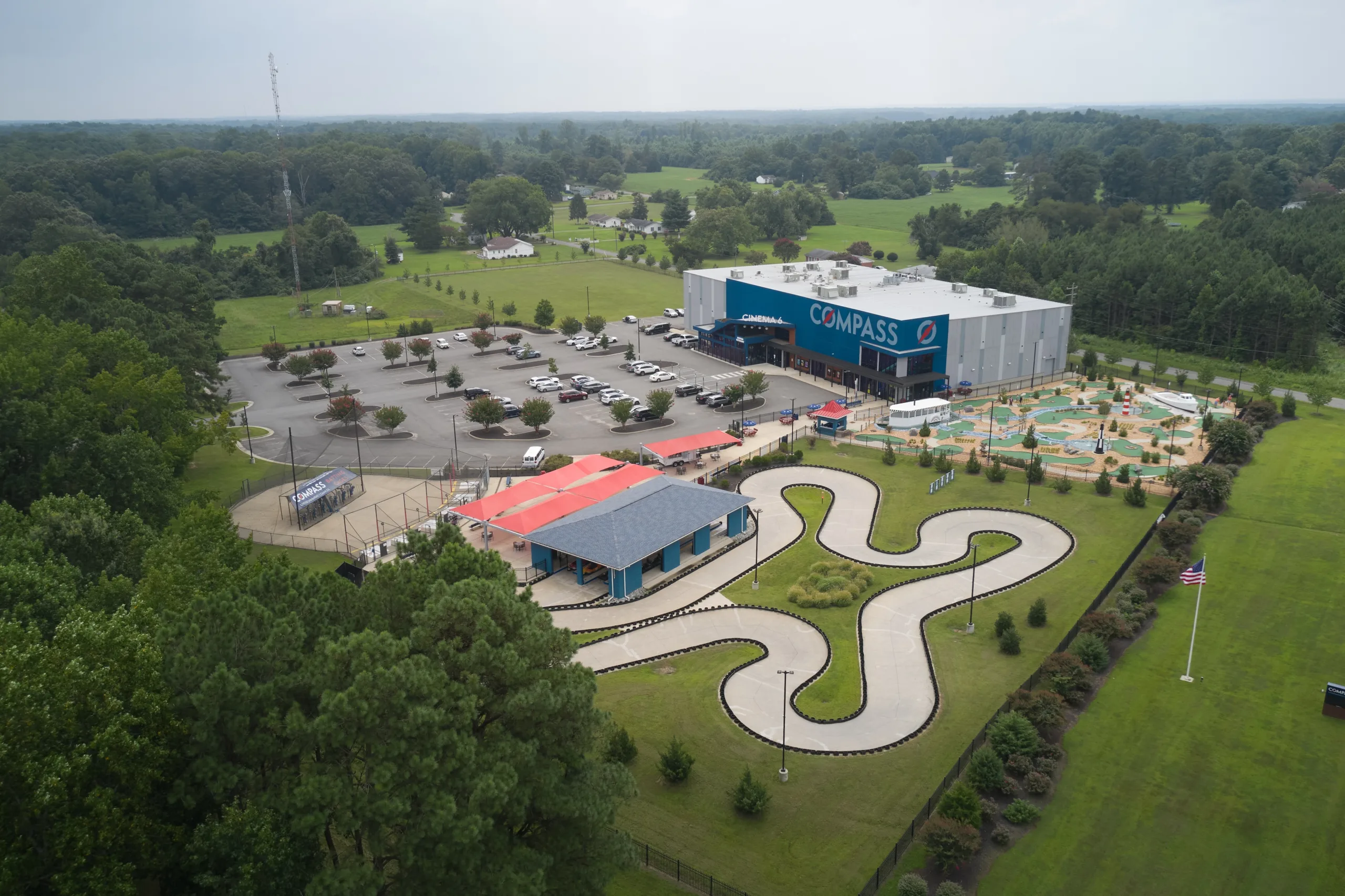It’s one thing to read about the health of the Chesapeake Bay. It’s another to experience it—to witness firsthand the almost inconceivable capacity of a single oyster to filter up to 50 gallons of water per day.
Will Smiley, the resident ecologist at the Tides Inn, understands that you have to see it to believe it. And, sometimes that knowledge is best internalized during a lesson spent puttering around Carter’s Creek with the ambient chatter of inn guests in the background. Enjoying oysters while the late afternoon sun casts its golden sparkle on the brackish water is a moment that anyone would want to preserve, whether it’s for the environmental impact or the simple pleasure of a briny Rappahannock oyster.
This is Smiley’s mission—to showcase this experience while educating adults and children alike on the critical importance of rebuilding the oyster population and the health of the Chesapeake Bay and its waterways.
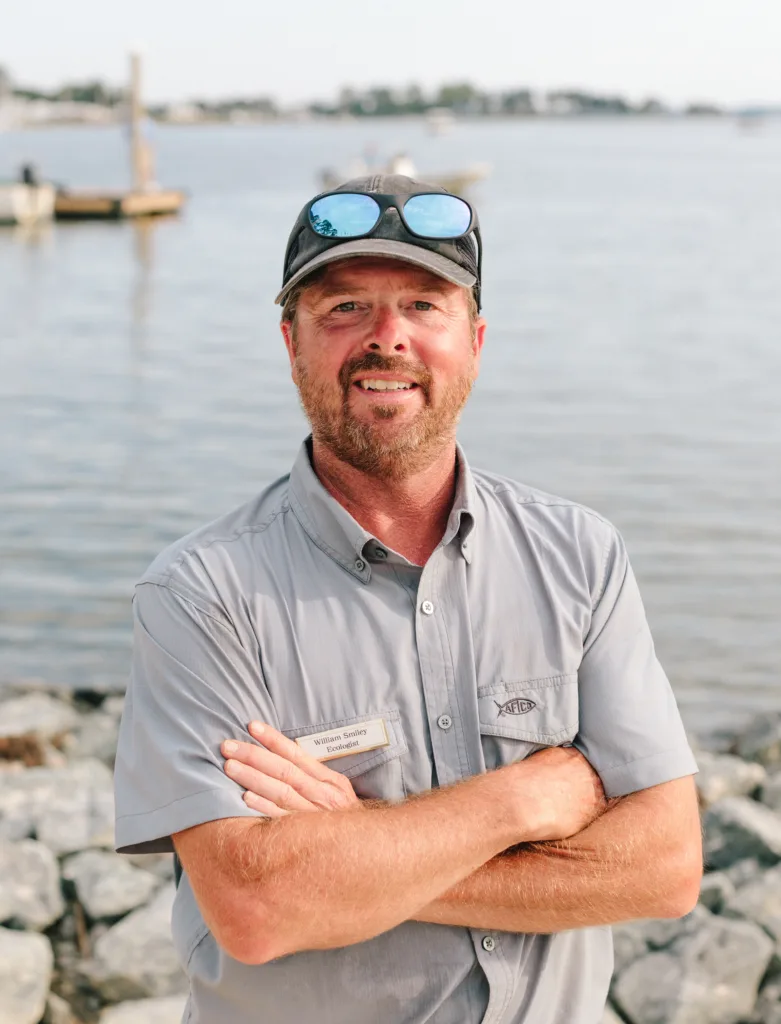
Growing up in the mountains of Virginia, Smiley spent his childhood outside in nature. There was an ever-present awareness of preserving the natural world, even before he grasped the larger implications. But it was a one-day Chesapeake Bay Foundation field trip that piqued his interest in the region’s waterways. “I was instantly locked in to help protect the planet and rivers,” recalls Smiley, whose laid-back energy echoes the ease of the outdoors.
His heels dug in the sandy banks as he moved to the Eastern Shore of Maryland to attend Washington College, took a job with the Chesapeake Bay Foundation, then came home to Virginia to Christchurch School on the Rappahannock River. As a science teacher and its waterfront director, Smiley set out to bring the ecosystem of the river alive for students, from the environmental to the economic.
He understood that without witnessing nature firsthand, just as he did, it’s difficult to grasp its power. “I’m curious about the present generation and how much time they are spending outside exploring, building dams in creeks, building forts and trails through the woods, and how much time they are spending with technology,” wonders Smiley. “How many of them will want to be involved in stewardship?”
Students’ immersion into the water culture was centered around Cans for Oysters, an initiative that Smiley launched to support the restoration of the shoreline. Aluminum cans are collected and recycled, then the funds go back into supporting the Christchurch oyster farm that he started with his classrooms. “Aluminum is an element and cannot be created or destroyed,” he says. “It can be turned back into another can a thousand times. We calculated that one can equals one oyster seed, which then equals 50 gallons of water being filtered.”
While Smiley’s legacy at Christchurch continues, his work took him to the Tides Inn, where he now has the responsibility of a two-pronged approach to both education and restoration.
Joining forces with Friends of the Rappahannock, Smiley has worked to install a living shoreline along the boardwalk at the Tides Inn. Recycled oyster shells and spat are continuously introduced to the region, along with native trees and plants.
By growing the oyster population and restoring the reefs along the shoreline, both in Urbanna Creek and now Carter’s Creek, Smiley’s goal is to encourage both oyster growth and, eventually, grass growth. “We want to grow enough oysters that the water will become clearer, the sun will hit the bottom, and grasses will grow,” explains Smiley, describing a healthy ecosystem where grasses will absorb excess nutrients and carbon dioxide, produce dissolved oxygen, and provide underwater habitat that supports life both in the water and above.
“The Tides Inn has given me amazing creative freedom to create hands-on, place-based programming where our guests are educated and given the chance to give back by participating in our restoration,” says Smiley. “The guests come because they’re intrigued by the oyster culture and cuisine, but they’re often met with a perspective-changing firsthand experience that they couldn’t have expected.

Tides Inn guests learn about the importance of oysters to the bay’s overall health from resident ecologist Will Smiley during his Chesapeake Gold Oyster Excursion.
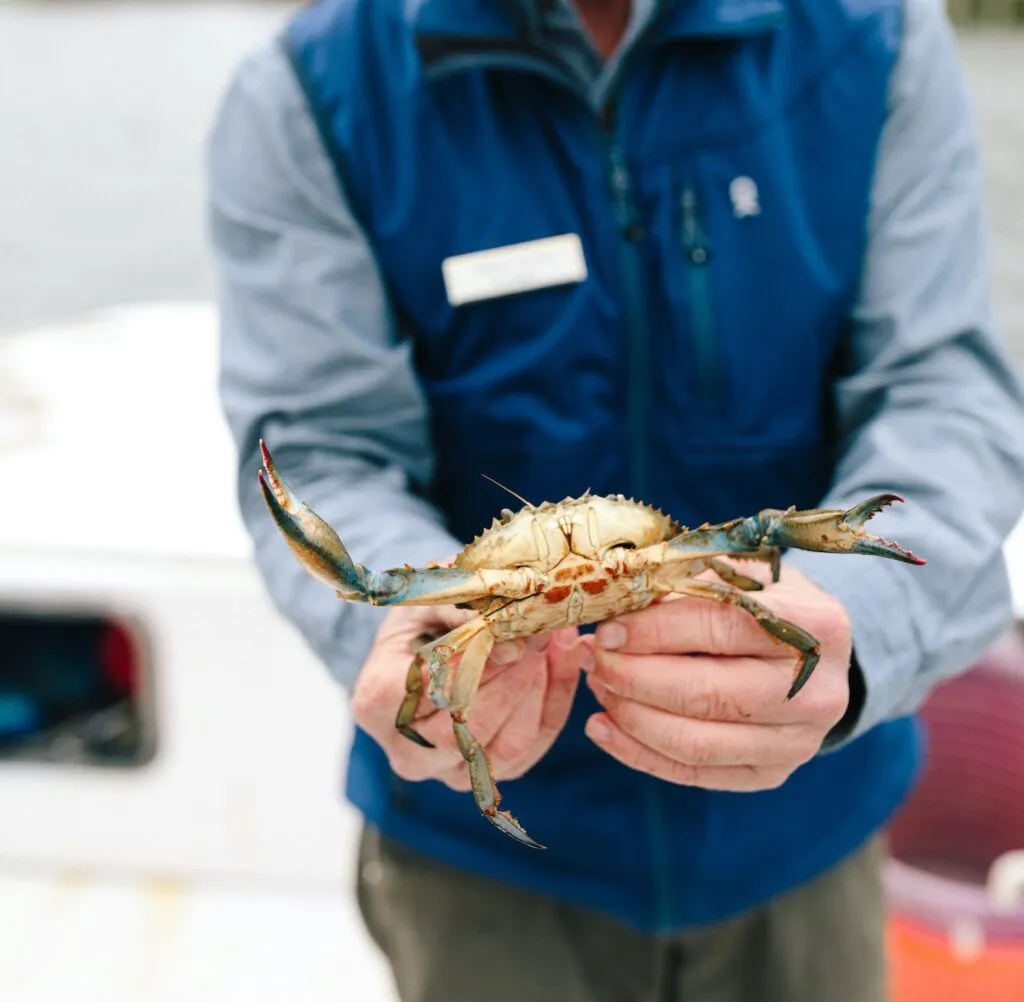
Will Smiley with a Chesapeake Bay blue crab during the Tides Inn’s Beautiful Swimmers Excursion.
Through his program, Chesapeake Gold, named for late local biologist William W. Warner, Smiley introduces guests to the ecological importance of oysters and other native species in the hopes that they’ll leave as enthusiastic stewards of the water. While captaining a boat around Carter’s Creek, Smiley covers the history and ecology of oysters, the events that led to the decline in the population, and the current-day restoration and culture. He ends the lesson with a culinary moment on the dock overlooking the Tides Inn. Without missing a beat, Smiley shucks and roasts oysters, whips up a savory mignonette, and pulls together a waterside shellfish feast, beer and sparkling wine included.
It’s seeing it all click that leaves a lasting impression on Smiley. The ecologist recalls one trip where he had a stoic—and intimidating—airborne military presence on board. “I thought at any moment he was gonna just toss me off the boat,” Smiley says, laughing.
He went through his normal lesson plan, cruising around Carter’s Creek, explaining the restoration work, and giving guests the opportunity to toss spat along the living shoreline. At the start of the trip, he filled an aquarium sitting on the dock with turbid, completely opaque water. Oysters sat along the bottom. According to plan, by the end of the trip, they returned to the dock and the water was crystal clear—a testament to oysters hard at work.
“The man looked at me and said, ‘That makes me want to change my life and help save the planet.’ I was blown away!”
And, as he grows the programming and stewardship at the Tides Inn, Smiley continues to see the impact of his original initiatives grow. “Hearing about students who continue to study environmental science and/or find a career that involves active work in sustainability is always encouraging,” says Smiley. He gets updates on the growth of the grasses in Urbanna Creek, and he’s optimistic about the future of these large-scale reef-building projects.
“We need to give this generation and future generations a healthy planet. I want my kids to be able to catch a fish from the Chesapeake Bay and feel good about eating it,” says Smiley.
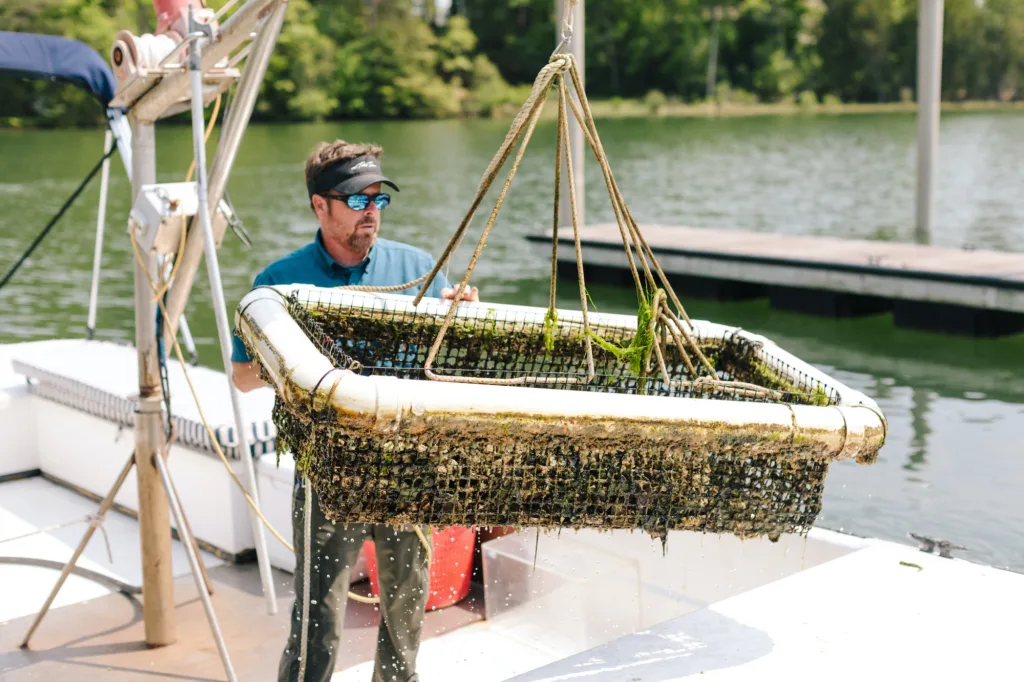
Resident ecologist Will Smiley hoisting a floating cage full of oysters in Carter’s Creek.
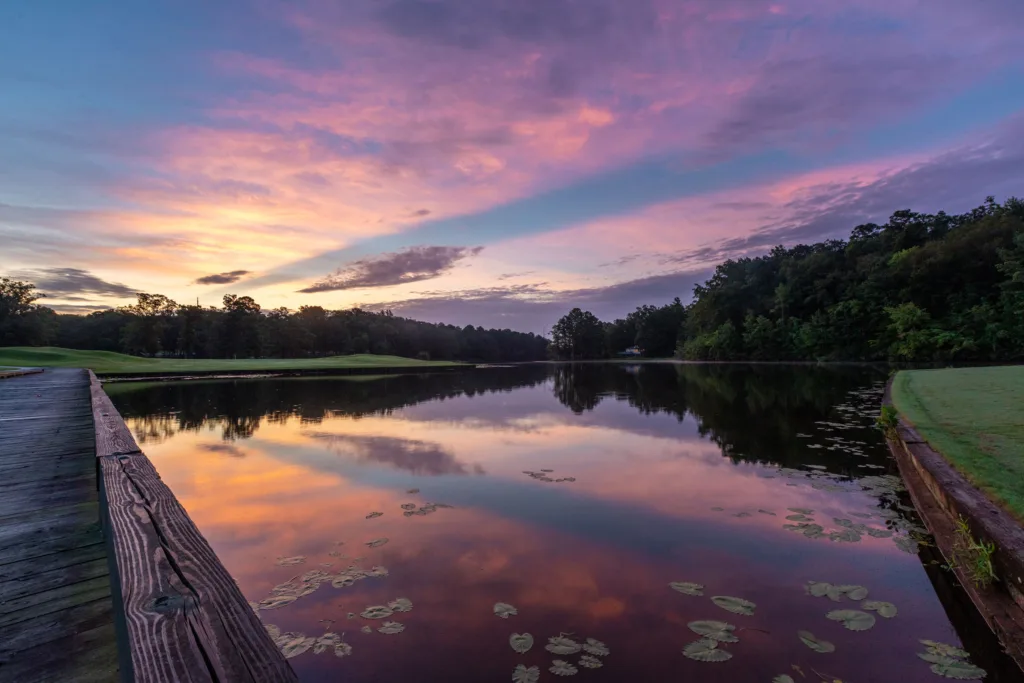

The Tides Inn, one of Virginia’s most iconic resorts, along Carter’s Creek in Irvington. The aerial photo shows boat slips, the resort, the pool and beach, and the Living Shoreline’s boardwalk that wraps around its coastline.
Legacy Reimagined
Hospitality meets ecology at the Tides Inn.
It was a tall task, filling the shoes of the Stephens family, who for decades owned one of Virginia’s most iconic resorts. The sprawling property on Carter’s Creek in Irvington is, of course, the Tides Inn. Opening in 1947, Big Steve and Miss Ann Stephens quickly made their mark, welcoming families for generations. Their philosophy was simple: “treat guests like welcome friends in our own home,” the couple always said.
For over five decades, the Stephenses indeed welcomed guests, but in 2001 they bowed out, selling the property to Enchantment Resorts, a hospitality group known for beautiful locations, luxury amenities, outstanding food, spa services, and unique guest experiences. The group also owns Mii Amo in Sedona, The Cove in Eleuthera, and Twin Farms in Vermont’s Green Mountains. Sisters Tracy Tang Limpe and Dana Tang lead Enchantment and have embarked on an ambitious plan to rejuvenate the Tides Inn, Virginia’s beloved treasure along its Chesapeake Bay coastline.
In each property, the Tangs make “place” a key driver of the guest experience: at Mii Amo, embracing the area’s energy patterns in Boynton Canyon’s mysterious vortex; at Twin Farms, hiking Vermont’s pristine wilderness or sharpening culinary skills. “As part of a large reinvestment and reinvention of the Tides Inn, we wanted to create experiences that were ‘of the place’—that were hands-on and fun, and also enriching,” says Tracy, describing their thoughtful and intentional approach to evolving the Tides.
In addition to significant infrastructure improvements and upgrades, the Tangs invested $3.6 million in restoring the resort’s shoreline, including a 1,300-foot wooden boardwalk along Carter’s Creek. The project added 18,000 square feet of living shoreline, nearly 11,000 additional shoreline and upland plants, 42 new trees, 150 linear feet of oyster reef, and more.
“When we happened to meet Will Smiley, who at the time was a high school science teacher and an amateur waterman, we knew we had to engage him in developing our marine-based programs,” says Tracy. His knowledge and passion intrigued the sisters. “He was also so engaging.” The timing was perfect, she continues. “We were underway on a shoreline restoration project. We realized that with our new Living Shoreline, combined with programs that Will helped us develop, we could have a positive ecological impact and provide something authentic and unique for our guests.”
—by Madeline Mayhood
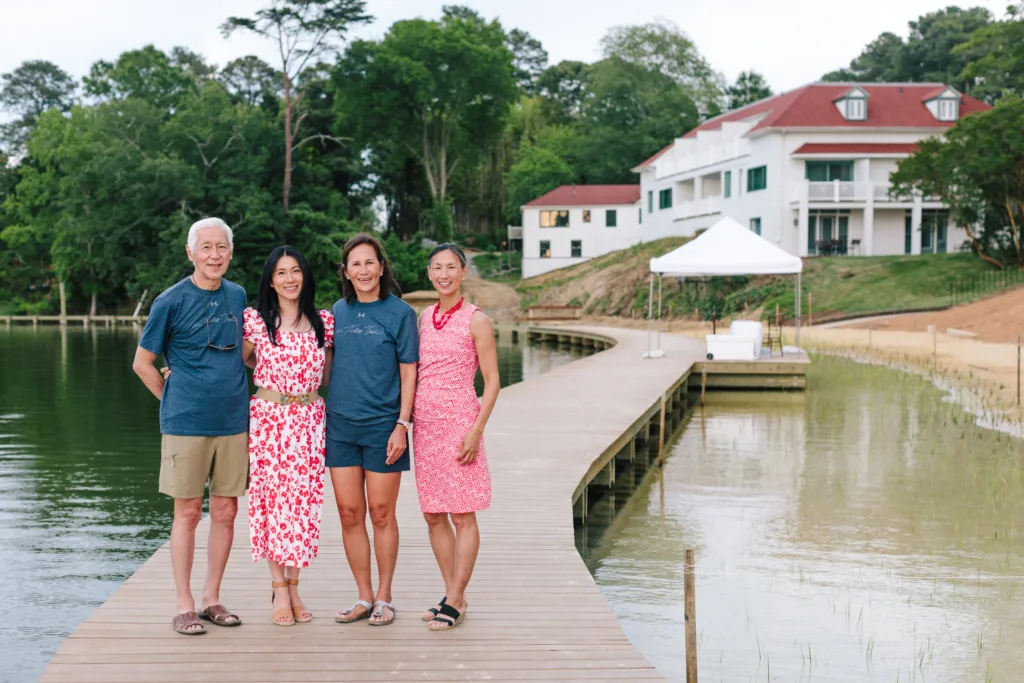
This article originally appeared in the August 2025 issue.

